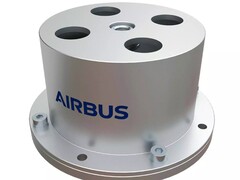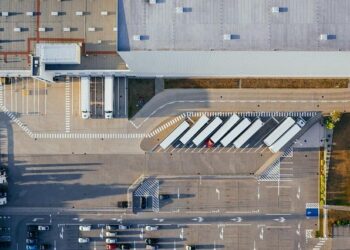 The detumbler will simply be attached to satellites. (Image: Airbus)
The detumbler will simply be attached to satellites. (Image: Airbus)
Airbus has announced tests for the new detumblers for early 2024 and has already launched one into orbit. The system is intended to keep the many LEO satellites under better control in future.
Andreas Sebayang (translated by Jacob Fisher), Published 11/17/2023 🇩🇪
In the future, Airbus plans to use a device called a detumbler to better stabilize satellites in low earth orbit (LEO) when they have reached the end of their operational life. This is intended to counteract the problems of space debris, as this is becoming an increasing problem with the growing supply of end devices that provide internet from space.
In the past, it was mainly expensive satellite phones that utilized the limited capacity in space as end devices, but today, given the growing constellations of small satellites, even regular LTE devices can connect to satellites. Corresponding networks are being set up and some consumer devices have long been on the market, albeit with very special and limited satellite communication capabilities.
Airbus plans to equip this large number of satellites with the 100 gram detumbler in future, which is designed to prevent satellites from tumbling out of control. Using the Earth’s magnetic field, an eddy current is generated by an internal rotor as soon as a satellite begins to tumble. In normal operation, the rotor simply follows the magnetic field like a compass. When tumbling, however, the rotor produces resistance.
There are likely to be a lot of tumbling satellites in low orbit in the future and it is not always expected that they will automatically fall back to earth.
The first test is scheduled to take place in early 2024 with Endurosat’s nanosatellite, the Exo-0. It was launched into space on November 11, 2023. Exo-0 will carry out a series of preplanned tumbling which the detumbler then attempt to counteract.
In the future, it may become easier for orbital cleanup missions to capture these out-of-control satellites. Corresponding plans are already in place here and there. Clearspace-1, for example, plans to try this out with larger pieces of space debris in a few years.

I’ve been involved in the IT business for over 20 years, first as a Sysadmin (Mac & PC; 2000-2014) and then as a journalist (2005 onwards). I have attended many industry events, such as IDF, Displayweek, Computex, CES, and IFA, to cover subjects like mobile and local networks, Bluetooth standards, and developments in the mobile sector. Since 2017 I have also worked as an aviation journalist, which involves traveling around the world reporting about both planes and trains.

Translator: Jacob Fisher – Translator – 371 articles published on Notebookcheck since 2022
Growing up in regional Australia, I first became acquainted with computers in my early teens after a broken leg from a football (soccer) match temporarily condemned me to a predominately indoor lifestyle. Soon afterwards I was building my own systems. Now I live in Germany, having moved here in 2014, where I study philosophy and anthropology. I am particularly fascinated by how computer technology has fundamentally and dramatically reshaped human culture, and how it continues to do so.
Andreas Sebayang, 2023-11-17 (Update: 2023-11-17)
>>> Read full article>>>
Copyright for syndicated content belongs to the linked Source : NotebookCheck – https://www.notebookcheck.net/Space-junk-Airbus-detumbler-intended-to-prevent-uncontrolled-rotating-debris-in-low-orbit.769890.0.html






























